On World
Below is my draft of the logical reasons and solutions for each stage of Ecorium developed reaching forward from the present day, through VotNF ('Visions of the near Future' project - in development), all the way to Sciror. These ideas will be blended into the final timeline of the Sciror setting later on, when I have the dates sorted, though we have the first date;
The first 'Ecroium' turns up in 2013 in Korea, designed by Samoo Architects & Engineers in collaboration with Grimshaw Architects, and made public around 2010. Nothing to do with me and the name is probably a coincidence (unless someone at British Grimshaw Architects is a massive 40K fan, and that fact the name has 'grim' in it makes me wonder if there is a 40K connection?). However, I now hereby retroactively claim that as part of the first stage in the Ecorium timeline. By serendipity, the Korean Ecorium is based on eco-domes and has research facilities (but still lacks work and living space). So we can fold this into VotNF as stage one, develop the later sages to get us off-world then fold the VotNF timeline into Sciror, then fold the completed concepts into Philhammer. All part of the Philhammer concept. So, for Visions of the Near Future;
Stage one - Genesis
Bio-domes of the Eden project, combining research facilities with an artificial ecosystem. The first appearance of the word 'Ecorium' appears on a rabid fanbois website in 2007, the first actual building bearing the name 'Ecorium' being built by Samoo in South Korea: Ecorium of the National Ecological Institute. The term develops over time to include 'work' rather than just 'research' with the development of peripheral support green businesses developed in conjunction with the eco-research and resulting product tested within the bio-domes. However, it is a while before we have non-related businesses inside bio-domes.
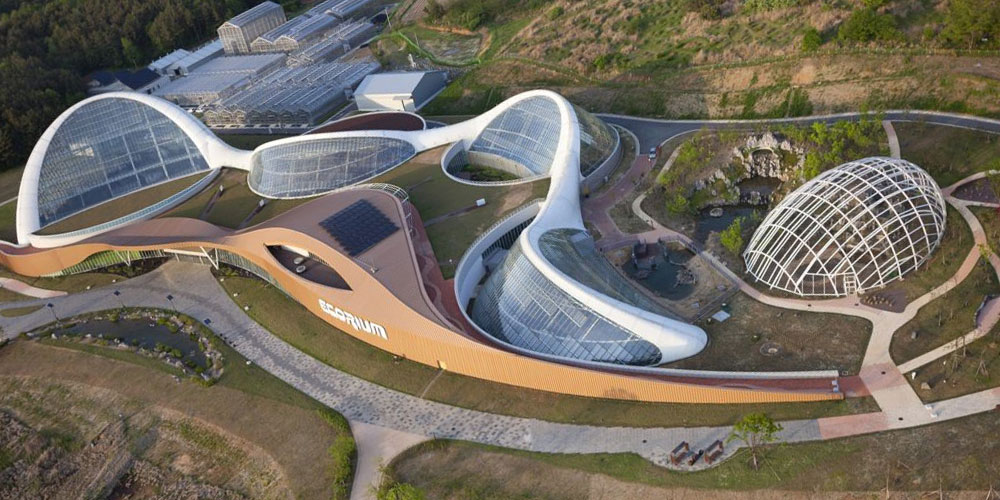
Stage two - Britain
Britain builds all over the green belt using the ECORR (Eco Construction Over Road and Rail) housing concept. Land that receives sun and rain is classified under a new eco-development guideline as 'premium land' as it can sustain life, acts as a carbon sink, and has to be preserved at all costs. This concept is combined with a movement to fight back against the old architectural paradigm of building residential and commercial property by the side of the road. A rejection of city planning that is not holistic, and instead seeks to create spaces where people want to live. Though many do not know they want ECORR until they see it. However, when they do see it, it leads to a rejection of the soul-destroying concrete jungles of modernist and collectivist 'European' thinking. All roads and rail systems are multilevel and are covered over with habitable space. Living space is moved to the outer layer, the 'skin', which all have roof gardens. Yep, everyone in an ECORR gains a garden built on the roof of the hab below, and their hab-unit is soundproofed. From a satellite photo, all you see is green space of roof gardens, with parks between ECORR blocks. A green and pleasant land once more. A place of tranquillity in a bustling, hyper-paced, modern world.
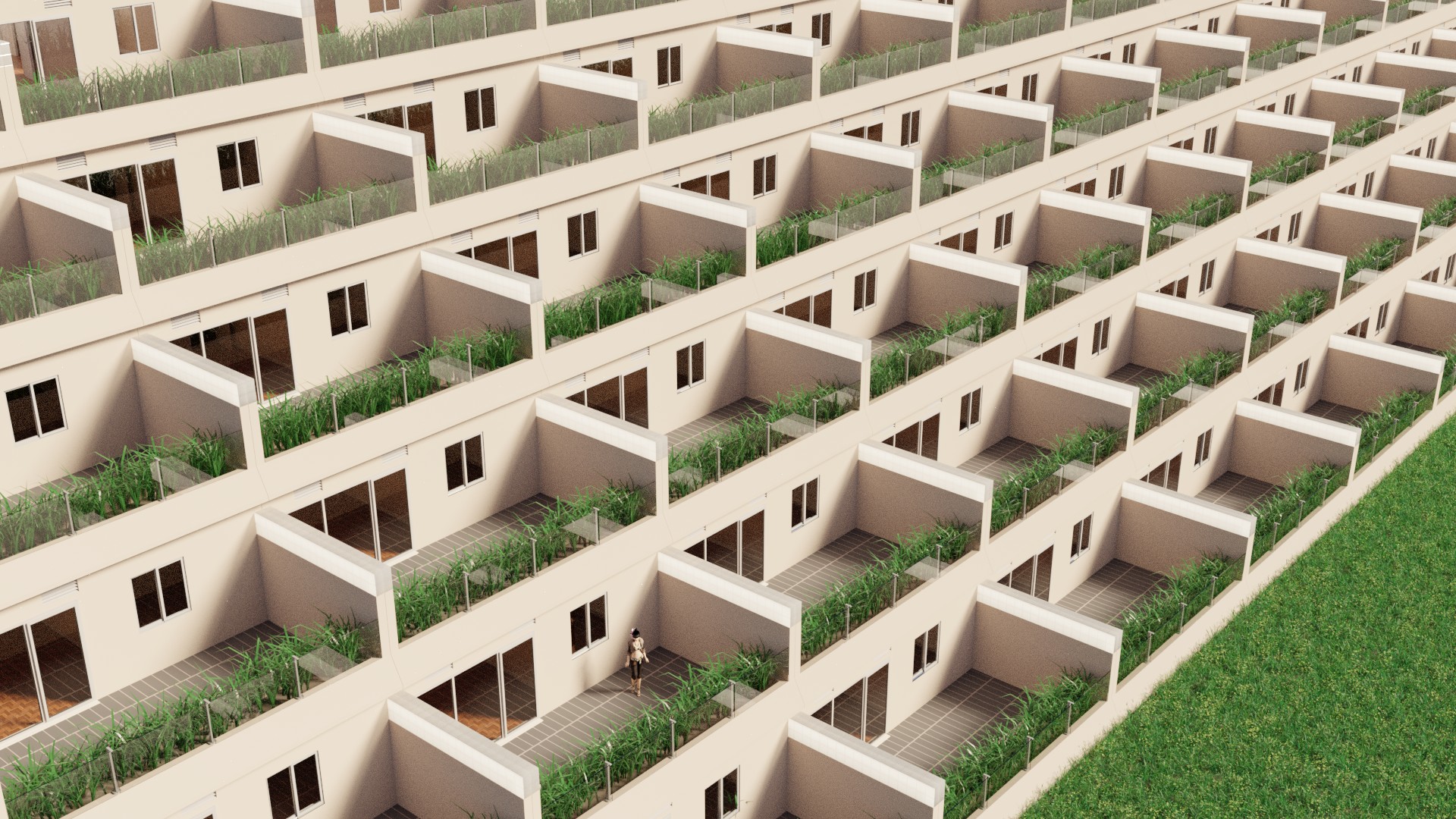
Inside the ECORR is a hive of activity, and contains all the commercial space, co-working spaces, offices, entertainment, gym and other facilities, you'll ever need, all with links to the hidden inner road and transport networks. Co-working spaces and work from home means work comes to you, rather than you travelling to the job. On-site jobs, such as maintenance of an automated factory, is done by remote drone. A worker goes to a co-working space and 'remotes in'. As time progresses these drones take over trivial tasks and only require oversight (guess what those drones are going to turn into?)
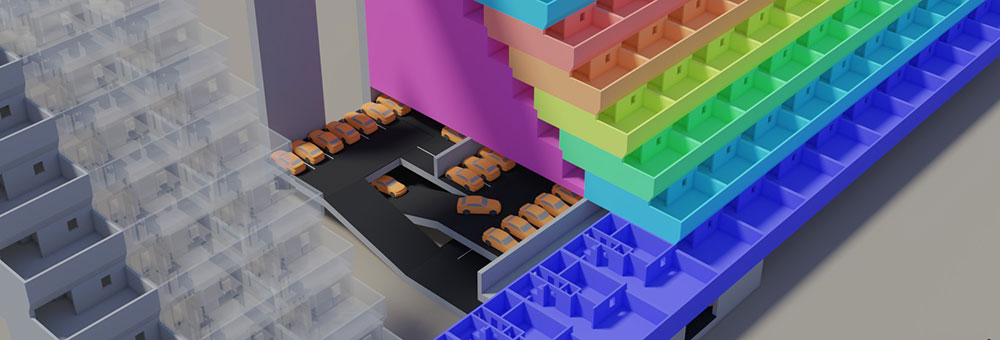
Stage three - The Gulf
Stage one and two are folded into each other. The first true Ecorium are created in the latter half of the 21st century: bio-dome with work and living space combined. (I am not aware of an example as yet on the planet, but it must be coming!). The first examples are built in the Gulf states as they are fantastically expensive. These Ecorium are the brute force terraforming of Earth's desert. Massive drive for self-sufficiency and water capture and recycling. No expense is spared to create a 'green and pleasant land' in the desert. They start out as climate controlled ecotourist attractions at first, but develop into standard housing for the Gulf states.
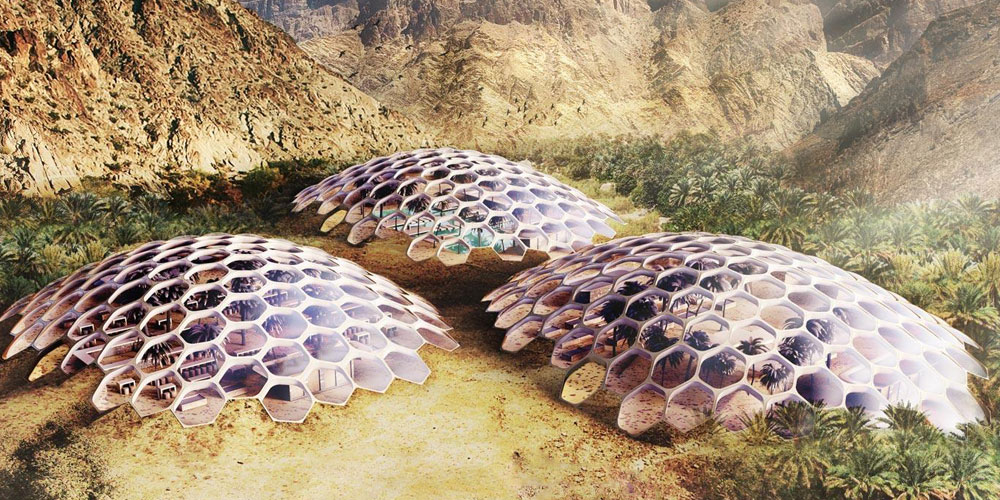
Stage four - Scandinavia
The introduction of artificial light and warehouse farming into the Ecroium equation for countries in the far northern hemisphere, where there is a lack of light during the winter months. These S4 blocks are built in Scandinavian countries and the Arctic. Gardens are not required as they get snowed over, and biodomes are pointless for the same reason. These environmental considerations lead to the utilitarian C-block I designed, and banged on about, back in 2004. (we all know how the Scandos love clean, utilitarian design! It's like the IKEA of environment building). To make it work the clever Scandinavians steal the ravings of a madman found on the Internet Archive and develop the rack-farm system 😛 These rack-farms is structured like a server-farm, except the 'blades' are trays full of plants, or bio-soup, grown under LED and later 'sunlight' emission polymer paints. Sunlight paints are used for all lighting, and linked to a standardised central day/night cycle (with override) which cures SAD (Seasonal Affective Disorder) and vitamin D deficiency.
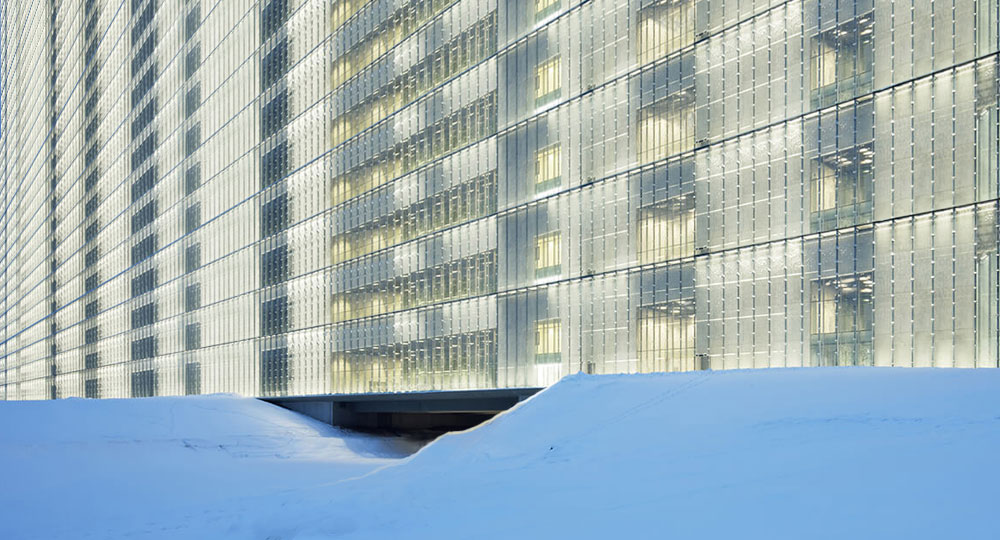
Usually a glass façade buildings, with the outer windowed areas being hab-units, and the inner core of rack-farms, and IT servers. The inner core generates heat to warm the building.
Stage five - Subterranean
The stage four C-Blocks are built underground to protect from nuclear attack. Subterranean, and miles below the surface, all interconnected with a (British style) tube system constructed within the grid of the K-Block (kilo-block as it is 1km square). Each C-Block is a standardised 300m cube. This military specification becomes the standard for civilian habitats moving past the 22nd century. Where these complexes are built: the surface returns to mother nature.
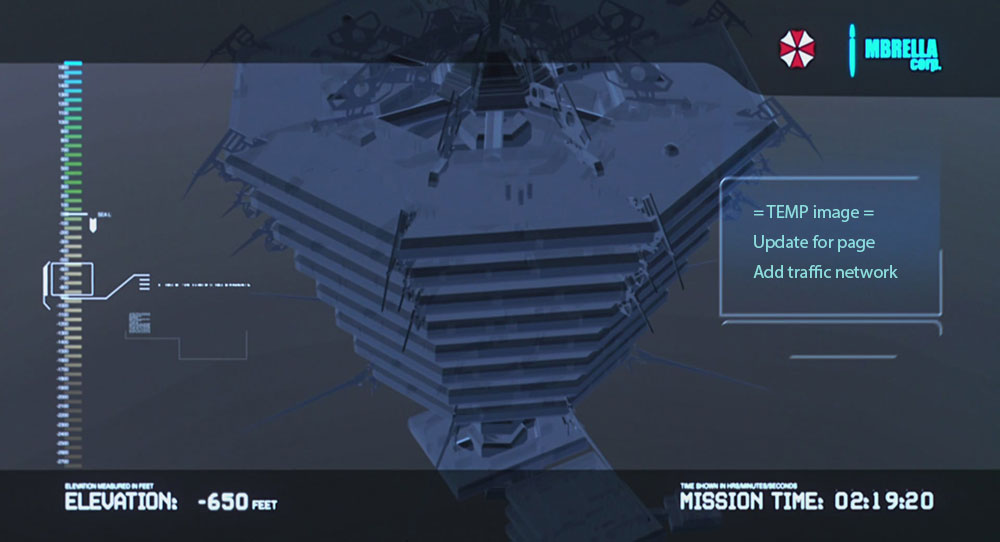
Nuke proof bunkers have long tunnel entrances with right angles to reduce the force of impact on heavy blast doors. However, these blast doors are not 'nuke proof', even the ridiculously thick doors of Cheyenne Mountain complex would not stop a direct hit. This was solved with the 'a tube train on a track' system that completely fills the entrance tunnel. The train is constructed to relatively tight tolerances, with clamp seals, and the carriages are filled with sand to absorb energy. After a nuke strike, the inhabitants do not come out (as the entrances would be known to the enemy, and leaving would mean they are sitting ducks as they exited). Instead, they stay put... for years. Any counter-strike is nuke based, and ground forces are repelled with remote-controlled drones, or illegal sentient killing machines (SKM) developed by the corporations black-ops. When, and if the war is won, the inhabitance can dig their way out, through prepared sand filled tunnels. However, most do not go to the surface unless they have to for work, and then most prefer to run around the surface in a drone.
Stage 6 - Underwater
A redesign of the subterranean Ecorium for deep sea construction. Airlocks added, along with attached decompression chambers, and universal docking ring for coupling with submersibles. In shallow waters; humans, drones, and subs can use the airlocks. Drones are not used for maintenance of the early prototypes, but training data of humans performing maintenance was recorded for drone reference. Internally, a major overhaul of the ventilation systems was needed to allow for internal bulkheads to contain water in the case of an outer wall breach scenario. The environment system does not use free-flowing air vents. Instead, a network of compressors, pumps and valves are used to move air or liquid from one chamber to another to equalise pressure or expel liquid. This system was hard tested by blowing a 2m hole through the outer wall with a limpet mine. The shutdown saved 92% of the internal space, and once the outer wall was patched with automated (test) drones, the environment system expelled the seawater.
Deep Water
When Ecorium are constructed below 200m, SCUBA diving is considered impractical for humans. The airlocks are used exclusively by drones and subs (with a grey area of the ADS anthropomorphic submersible, but not used) All external maintenance in the deep is done by remote drones. These drones are not human-like as the environment is so hostile to humans there is no need to implement the human redundant design. If a human were to perform maintenance using an ADS (very rare), they would not use normal human hand-held tools, as ADS do not expose the hands, and instead have mechanical claws and hard-points to attach the drone tools.
Off World
Once sealed up Ecoria can be transported off world. Brute force terraforming with C-Blocks built by sentient machines (pre-cursor of the Artiloids) on distant worlds. This is where VotNF ends, and Sciror begins.
Stage 7 - orbit
A rotating wheel space station with cermet based Ecorium in the ring, using centrifugal force to create a simulation of gravity. Similar to Space Station V from 2001. All building material, prefab parts, and drones are put into space using a Mass Launcher. Due to the incredibly high acceleration of objects launched using this system: it is unsuitable for astronauts. Instead, astronauts are launched into orbit using a traditional (by then) hypersonic SABRE engines.
The Ecorium is a fundamental part of the recycling of air in the life-support system. The growing-rooms house banks of sealed rack-farms to reprocess the air, and absorb carbon dioxide, and produce oxygen. All powered with Thorium Reactors, used for efficiency of fuel use and safety. The rack-farms produce food for the astronauts. Careful calculations were made to ensure sustainability, with the excess food production being incinerated to balance the system (else the CO2 will be used up, and the remaining plants die). Aeroponics uses little water, and most of the water is stored in underfloor tanks in the growing-rooms, arranged in a cell structure, where each cell can be isolated and severed from the system. Water is run through the reactor, for cooling, and to ensure the water is sterilised.
Also used in early space flight by humans with our solar system, using the principles rotational ring design. The ships used in the colonisation of Mars used this system, while the Ecoria built on the Martian surface used a variant of Stage 6.
Stage 8
Interstellar starship design. These Ecoria are spun to produce centrifugal force to act as artificial 'gravity'. Stage 8 systems use 'grav-plates', based on phased-materials, which do not produce gravity! These materials were created by the Artilects.
There is a long gap between stage 7 and stage 8. While humans colonised the stars, we did not travel there using interstellar ships using stage 8 designs. Instead, it was only the machines that travelled to the stars, and when they arrived thousands of years later, they constructed humans out of base elements They wove our DNA, incubated the first generation, and then Artiloid nannies brought up this founding generation. The history of a human colony is always a fiction, designed to give humans a functioning culture and psychological stability. Most colonies think they are still on Earth and never went anywhere, completely unaware they are thousands of light years from humanity's birth, and still dreaming of going to the stars.
For untold millennia, there was no faster way to travel between the stars. The Artilects had created warp-drives for the human expansion into space, but they could not navigate, so the program was put on indefinite hold. Suspended animation was ruled out due to the extreme timeframes of getting to the stars, as was frozen embryos (or sperm and eggs) due to vulnerability, so the machines decided to build humans once they arrived at their destination. The alternative, and less desirable, constructor ships were used. Stage 8 only became a reality when organic based psionics become noticeable on certain high-density hive worlds, and the machines discovered that some humans could sense the flow of the warp. This led to the 'navigator' program, selective breeding, and genetic engineering. Once a machine-human hybrid could navigate the warp, the Supremacy dominated the galaxy.
Original blog posts with discussion here: Ecorium Development, and Ecorium development continued.
Connect
If you liked this, and would like to leave a comment on my guestbook, or catch up on all the recent comments, please visit my connect page. While there, you can also subscribe to email notifications, so you never miss a new post, along with my RSS feed as a backup. If you are feeling generous, and I know times are hard, you may support my site through Patreon (exclusive behind the scenes content), PayPal or Bitcoin! Lastly, there is a confidential contact form for any secret messages you wish to pass to me. Thank you for reading, and I look forward to hearing what you have to say :)
